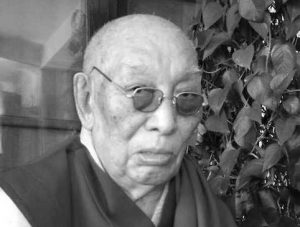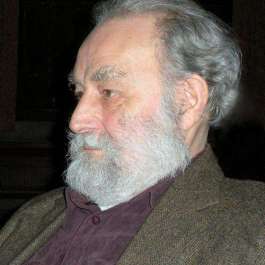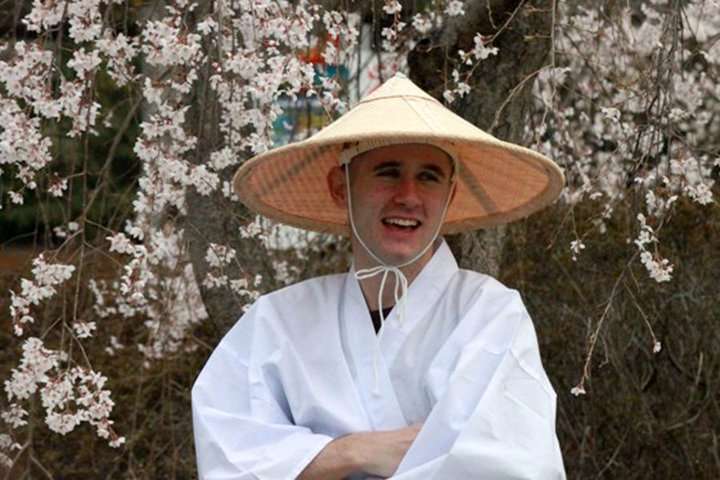
Japan is the land of the rising sun and hopelessly polite people. On the surface, it appears to be a secular country, but if one looks closely one finds the citizens to be surprisingly spiritual. This spirituality is influenced by both Buddhism—brought to the court of Emperor Kinmei by a Korean mission (c. 552)—and Shintoism, the indigenous religion of Japan.
This spirituality manifests itself in the large number of temples and shrines one can find all over the country. And where there are religious buildings, there are usually pilgrimage routes connecting them to one another. The Shikoku Pilgrimage (四国遍路 Shikoku henrō or 四国巡礼Shikoku junrei) is one such pilgrimage route. Taking place on the small southern island of Shikoku, it links 88 core temples and 20 secondary temples (in total 108 temples) in a 1,100–1,400 kilometer route.
The numbers 88 and 108 are both significant in Japanese Buddhism. For instance, 88 represents the 88 Buddhas of Zen cosmology and is often used to denote “a great many” or “countless” in Japanese. Meanwhile, 108 is the number that results when one multiplies the six sense faculties (sight, smell, hearing, touch, taste, and consciousness) by whether they are pleasant, neutral, or painful, by whether these are externally occurring or internally generated, and finally whether they are part of the past, present, or future. In mathematical form, it’s 6 (sight, smell, hearing, touch, taste, and consciousness) x 3 (pleasant, neutral, or painful) x 2 (external or internal) x 3 (past, present, or future) = 108. And at the year’s end, a bell is rung 108 times in Buddhist temples in Japan to ring out the old year and welcome in the new, each chime symbolizing one of 108 unwholesome actions (क्लेश klesa) one must overcome before attaining Nirvana and Buddhahood.
One person who has completed the pilgrimage is Kristopher Littlefield, a CrossFit gym owner and instructor in the ancient Japanese capital of Kyoto. Although Kristopher is not Japanese and does not consider himself a Buddhist, he decided to undertake the pilgrimage in 2011. He is not the only foreigner to do so and in recent years the pilgrimage has gained popularity among travelers in Japan.
Prior to working as a CrossFit instructor in Kyoto, Kristopher worked in Tokyo and Yamaguchi, and volunteered in Tohoku after the tsunami in 2011, in addition to having volunteered in other countries, such as Thailand and Kenya. He is married to a jewelry artist and together they have a cat they found as an abandoned kitten on the street, a little over a year ago. The cat plays an important role in Kristopher’s life. In his words: “As much as he’s ‘just a cat,’ he probably defines my life more than any accolades ever will.”
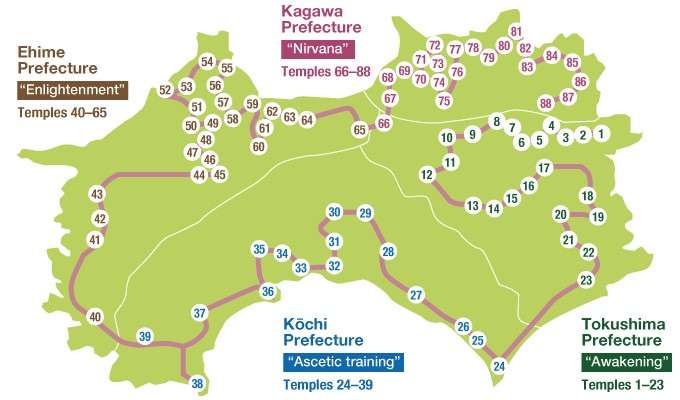
Buddhistdoor Global: Why did you decide to go on the Shikoku Pilgrimage?
Kristopher Littlefield: I will be completely honest with you. I had absolutely no plans to undertake the pilgrimage. I was not even aware of its existence when I first moved to Japan. At that time I lived in Yamaguchi (the far west countryside on the island of Honshu), where I taught English to children and adults. Each time I met a new student I would ask them a series of questions. The first one was always a variation of “What’s your dream?” I would usually get answers like, “I want to be . . .” or “I want to do . . .” My next question was always, “When?” Most of the time, I would receive either no answer or some far off look into the distant future.
One day, I was sitting in a room at a local chemical company, when a new student came in. The class should have six people, but the other five were all absent due to business trips. He sat down and I began the same way. I asked him: “What are you dreams and aspirations?” To which he replied, “Hmm. . . . I want to hike the Shikoku Ohenrosan.” I had not heard of the Shikoku Ohenrosan before, so I asked him to explain what it was. He told me: “It’s a Buddhist pilgrimage passing by 88 temples on the island of Shikoku.” “Wow, that sounds amazing. So, when?” I asked, as I had so many times before. “I can’t,” was the reply.
At that moment, I felt it right away. You know the feeling when something just drops to the bottom of your stomach and makes you want to cry out in frustration? That’s how I felt and it is still hard to explain why. I mean, obviously, my 25 year old student was far from retirement—most of the pilgrims in Shikoku have passed the retirement age—but to say “I can’t” just sounded so helpless. So, the next sentence just rolled out of my mouth: “If I do it . . . seriously, will you?” He answered in the affirmative.
Three months later, after ending my teaching contract, I was in my friend’s car about to be dropped off at Ryozen-ji, my first stop on the Shikoku Pilgrimage. I was inspired by my conversation with my 25-year old student and carried with me the prayers, dreams, and wishes of all those who were willing to share them with me in a notebook (I still have the notebook and continue to bring it with me whenever I go to a temple so that the dreams and hopes of those who can’t go may still reach these places of prayer).
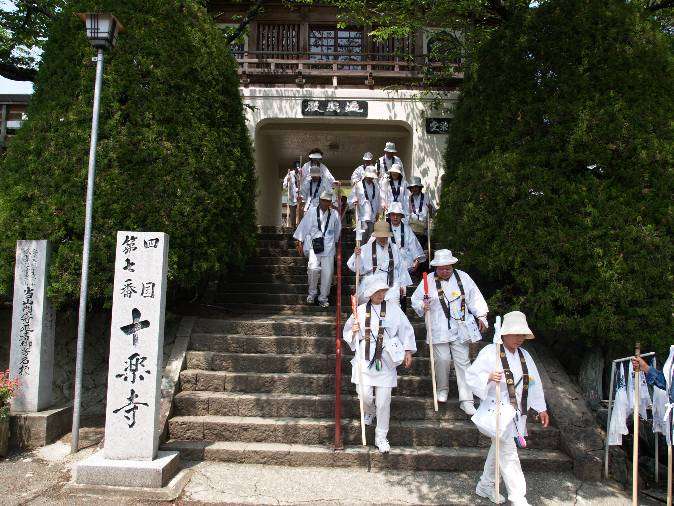
BDG: Could you please describe your pilgrimage for our readers?
KL: I completed the pilgrimage in 35 days, visiting the 88 main temples during my journey (sadly not being able to visit the 20 secondary temples nor Koya-San,* although I do still plan to visit all of them). This was a regrettably fast pace, but one I chose so I would be able to go up to the northeast to volunteer in the Tohoku area before my new job would start. I started my pilgrimage on 2 April 2011, just three weeks after so many homes and lives were lost in the devastating tsunami.
During my pilgrimage, I slept outdoors, once in a temple, a few times in family guesthouses, and many times in free sheds, as well as rooms offered to me along the way by people passing by. This pilgrimage is actually quite a different experience compared to spending time in temples. The journey itself is guaranteed to be littered with memories. People will stop their cars to give you food or they will offer you a room to sleep in for the night. You will be tired, and in physical pain. There will be times when you feel completely alone, and there will be times when you are surrounded by like-minded people. It is an experience that is really hard to put into words.
BDG: Which route did you follow during your pilgrimage? We understand that most pilgrims follow the route in a specific set order, while others choose to take the pilgrimage in reverse.
KL: I started with the first temple on the list and continued to visit the temples in the normal order. I considered going in reverse order, or making my own order, but I ended on this path for a few specific reasons. For one, of course, it was easier; If you follow the pilgrimage route in the normal order there are markers to lead the way and tell you where to go, and people who live in the area can help out if you get lost. In addition, there is something meditative about following a route that has been walked by so many people before you. Lastly, there are more people walking the route in the normal direction, so by choosing to do the same, I had the chance to spend a day or two walking with someone else. The walking and the temples are an experience in itself, but nothing magnifies this experience more than spending some of that time with another person.
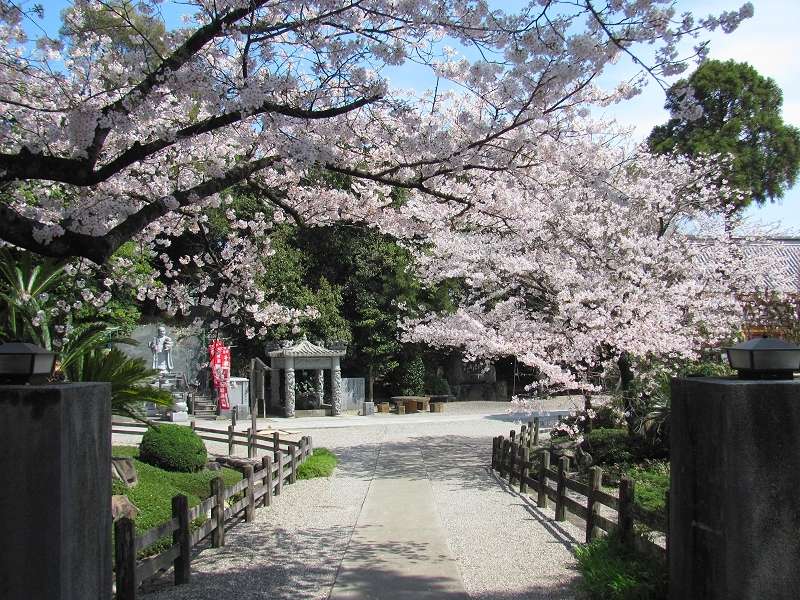
BDG: Which temples were the highlight of your journey? Any temples that stand out?
KL: I don’t know if I would list them as a highlight, but there are two temples, located next to each other (relatively speaking), that stand out in my memory. One is Sankaku-ji, and the other is Unpen-ji. I don’t really know why these two temples are so special to me to be honest, other than the fact that it was at these temples that my feelings somehow changed. Visiting 88 temples, chanting at each of them, lighting all the incense—at first it feels like an exciting dance, but it quickly becomes a routine. After that it feels like a chore and at some point it becomes a journey. My journey started at these two temples. If you were to ask me which temples were the most beautiful, I would be partial to the season. The first 10 temples I visited were blooming with cherry blossoms and the last few were draped in fog. There are temples that were used as secret places of worship for persecuted Christians. And there are temples loaded with cash, displaying their opulence. There are temples with cute cats, and temples in the serenity of nature. It is really hard to choose a favorite!
BDG: Would you recommend other Buddhists to undertake this pilgrimage at least once in their lives?
KL: Yes. Although I do not know if I would consider myself a Buddhist. I met so many true Buddhists making the pilgrimage for their first, third, and even 20th time. The flavors of temples mix together in a beautiful potpourri of calm existence. That is what I felt on my journey!
BDG: What happened to the 25-year-old student, who inspired your journey? Did he end up going on the pilgrimage?
KL: Yes he did! The same day that I visited temple 88, I called my student to tell that I had finished. About six months later, he quit his factory job, and went on the pilgrimage.
It turned out that the pilgrimage was not his end-goal. He wasn’t living a life he felt was worth living while working in a factory for 12–14 hours a day. The pilgrimage gave him a reason to leave that job. Now he has a small restaurant in his hometown and he’s a million times happier.
* Mount Koya houses the headquarters of the Kōyasan Shingon sect of Japanese Buddhism and one of the World Heritage Sites of the Sacred Sites and Pilgrimage Routes in the Kii Mountain Range.



